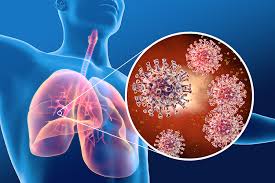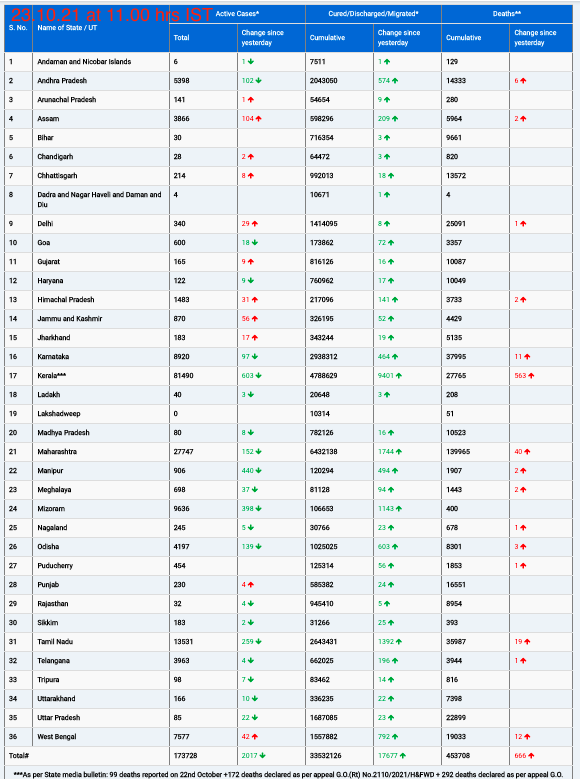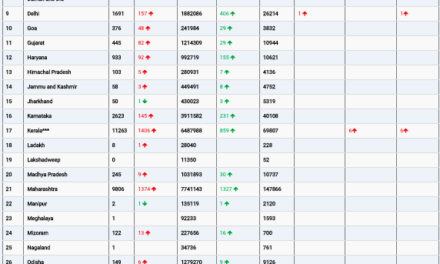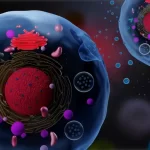Situation at a glance
Description of the situation
Between 10 and 17 April 2024, the Ministry of Health (MoH) of the Kingdom of Saudi Arabia (KSA) reported three cases of Middle East respiratory syndrome coronavirus (MERS-CoV), including one death, to WHO. All three cases were reported in Riyadh and linked to the same health-care facility. Two of the cases were identified through contact tracing following identification of the index case. The second and third case are suspected to be secondary health care associated cases due to contact with the index case. The investigations are ongoing to verify this and understand the route of transmission.
The index case is a 56-year-old male school teacher, and a Saudi national residing in Riyadh. On 29 March, he developed a fever, cough, runny nose and body aches. He sought medical care at the emergency room (ER) of a hospital in Riyadh on 4 April, where case number three was also being treated. He was then admitted to a ward on 4 April, where he shared a room with case number two. On 6 April, he was transferred to Intensive Care Unit (ICU) isolation and intubated, was tested by reverse-transcriptase polymerase chain reaction (RT-PCR), and was confirmed positive for MERS-CoV. The case had underlying health conditions, including hypertension and chronic renal failure requiring hemodialysis . There was no clear history of exposure to typical MERS-CoV risk factors. Close contacts, including 20 health and care workers and seven household members, were followed up, which promptly identified the two secondary cases. Investigations, including determining the source of the infection, are still ongoing. The index case died on 7 April.
The second case is a retired 60-year-old male Saudi national, residing in Riyadh. He was admitted to the ICU at the same hospital in Riyadh on 8 March 2024. On 31 March, he was transferred to a ward, where he subsequently shared a room with the index case on 4 April. The case developed a fever on 6 April and tested positive for MERS-CoV by RT-PCR on 8 April. He has underlying health conditions including heart disease and being a smoker. With no history of exposure to camels, the case is suspected to be a secondary healthcare-associated case due to contact with the index case, with investigations ongoing. The follow-up of 13 health and care workers and one patient has been completed, with no additional cases identified to date.
The third case is a 60-year-old male, retired military personnel and Saudi national, residing in Riyadh. On 4 April, he went to the ER of the same hospital in Riyadh, where the index case was also admitted. He was then admitted to the ward (different to the one that the index case and case number two shared) on 5 April. He developed shortness of breath on 10 April and was transferred to the ICU on 15 April. He tested positive for MERS-CoV by RT-PCR on the same day. He has underlying health conditions including chronic renal failure requiring hemodialysis, malignancy, and liver disease. No history of exposure to camels was identified and, like the second case, he is suspected to be a secondary healthcare-associated case due to contact with the index case. A follow-up of 14 health care workers is ongoing, with no additional cases identified to date.
As of 21 April 2024, the second and third cases remained in the ICU and were intubated on 9 April and 18 April, respectively.
Additionally, since the last Disease Outbreak News (DON) published on 16 February 2024, one further case has been notified through IHR mechanisms with no epidemiological link to the three cases described above. The case is a 32-year-old male with comorbidities from Taif, KSA who had had direct contact with camels, he had onset of symptoms on 21 January and died on 17 February 2024.
Since the first report of MERS-CoV case in KSA in 2012 until 21 April 2024, a total of 2204 human cases and 860 deaths have been reported (Figure 1). Overall, a total of 2613 MERS-CoV cases and 941 deaths have been reported from 27 countries, in all six WHO regions. Of these 84% of the cases and 91% of the deaths have been reported from KSA, including these newly reported cases and death. Since 2019, no MERS-CoV cases have been reported from countries outside the Middle East.
There was one large outbreak outside of the Middle East in the Republic of Korea, in May 2015. It was characterized as a health care-associated infection, during which 186 laboratory-confirmed cases (185 in the Republic of Korea and 1 in China) and 38 deaths were reported; however, the index case in that outbreak had a travel history to the Middle East. The global number reflects the total number of laboratory-confirmed cases reported to WHO under IHR (2005) or directly by Ministries of Health to date. The total number of deaths is based on numbers reported to the WHO through follow-up with affected Member States.
Figure 1: Epidemic curve of MERS-CoV cases (n=2204) and deaths (n=860) reported in KSA between 2012-21 April 2024*
Epidemiology
Middle East respiratory syndrome (MERS) is a viral respiratory infection caused by the MERS-CoV. Approximately 36% of patients with MERS have died, though this may be an overestimate of the true mortality rate, as mild cases of MERS-CoV may be missed by existing surveillance systems, and the case fatality ratio (CFR) is calculated based only on laboratory-confirmed cases.
Humans are infected with MERS-CoV from direct or indirect contact with dromedary camels, which are the natural host and zoonotic source of the virus. MERS-CoV has demonstrated the ability to transmit between humans. So far, non-sustained human-to-human transmission has occurred among close contacts and in health care settings. Outside of health care settings there has been limited human-to-human transmission to date.
MERS disease ranges from having no symptoms (asymptomatic) or mild respiratory symptoms, to severe acute respiratory disease and death. A typical presentation of MERS disease is fever, cough, and shortness of breath. Pneumonia is a common finding, but not always present. Gastrointestinal symptoms, including diarrhea, have also been reported. Severe illness can cause respiratory failure that requires mechanical ventilation and support in an intensive care unit. The virus appears to cause more severe disease in older people, persons with weakened immune systems, and those with underlying health conditions such as renal disease, cancer, chronic lung disease, and diabetes.
The number of MERS-CoV cases reported to WHO has substantially declined since the beginning of the ongoing COVID-19 pandemic. Initially, this was likely the result of epidemiological surveillance activities for COVID-19 being prioritized. The similar clinical picture of both diseases may result in reduced testing and detection of MERS-CoV cases. Since then, the Ministry of Health of KSA has been working to improve testing capacities for better detection of MERS-CoV by including MERS-CoV into sentinel surveillance testing algorithms from the second quarter of 2023, following negative test results for influenza, Respiratory Syncytial Virus (RSV), and SARS-CoV-2 (responsible for COVID-19). In addition, measures taken to reduce SARS-CoV-2 transmission (e.g., mask-wearing, hand hygiene, physical distancing, improving the ventilation of indoor spaces, respiratory etiquette, stay-at-home orders, reduced mobility) also likely reduced opportunities for onward human-to-human transmission of MERS-CoV. Potential cross-protection conferred from infection with or vaccination against SARS-CoV-2 and any reduction in MERS-CoV infection or disease severity and vice versa has been hypothesized but requires further investigation.
No vaccine or specific treatment is currently available, although several MERS-CoV-specific vaccines and therapeutics are in development. Treatment is supportive and based on the patient’s clinical condition and symptoms.
Public health response
The KSA Ministry of Health has initiated active contact tracing for the identified cases following their isolation, with daily monitoring throughout the 14-day incubation period and laboratory testing for high-risk contacts. Triage for respiratory diseases has been implemented in the emergency department to enable early detection of patients with respiratory symptoms, assisted by dedicated nurses available 24/7 for accurate documentation in the triage forms.
In addition, comprehensive refresher training on case definition has commenced for all health and care workers to ensure early detection of cases. Additionally, training sessions on the implementation of infection prevention and control (IPC) standards and transmission-based precautions related to MERS -CoV are ongoing while ensuring the availability of IPC supplies such as hand sanitizers and personal protective equipment (PPE).
WHO risk assessment
The notification of these cases does not change the overall risk assessment. WHO expects that additional cases of MERS-CoV infection will be reported from the Middle East and/or other countries where MERS-CoV is circulating in dromedaries. In addition, cases will continue to be exported to other countries by individuals who were exposed to the virus through contact with dromedaries or their products (for example, consumption of raw camel milk), or in a health-care setting. WHO continues to monitor the epidemiological situation and conducts risk assessments based on the latest available information.
WHO advice
Based on the current situation and available information, WHO re-emphasizes the importance of strong surveillance by all Member States for acute respiratory infections, including MERS-CoV, into the testing algorithm were warranted and to carefully review any unusual patterns.
Human-to-human transmission of MERS-CoV in health-care settings has been associated with delays in recognizing signs and symptoms of MERS-CoV infection, delayed isolation of suspected cases and delays in implementing IPC measures. IPC measures are, critical to prevent the possible spread of MERS-CoV between people in health-care facilities. Health and care workers should apply standard precautions consistently with all patients at every interaction in health-care settings. Droplet precautions should be added to the standard precautions when providing care to patients with symptoms of acute respiratory infection; contact precautions and eye protection should be added when caring for probable or confirmed cases of MERS-CoV infection; airborne precautions should be applied when performing aerosol-generating procedures or in settings where aerosol- generating procedures are conducted. Early identification, case management and isolation of cases, quarantine of contacts, together with appropriate infection prevention and control measures in health-care settings (including preventing overcrowding), and public health awareness can prevent human-to-human transmission of MERS-CoV.
MERS-CoV appears to cause more severe disease in people with underlying health conditions such as diabetes, renal failure, chronic lung disease, and immunocompromised persons. Therefore, people with these underlying medical conditions should avoid close contact with animals, particularly dromedaries, when visiting farms, markets, or barn areas where the virus may be circulating. General hygiene measures should be followed, such as regular hand washing with soap and water or hand hygiene with alcohol-based hand rub, before and after touching animals. Contact with sick animals should be avoided.
Food hygiene practices should be observed. People should avoid drinking raw camel milk or camel urine or eating meat that has not been properly cooked.
WHO does not advise special screening at points of entry regarding this event, nor does it currently recommend the application of any travel or trade restrictions.
Further information
- MERS Fact sheet
- MERS global summary and assessment of risk
- Middle East Respiratory Syndrome Overview
- WHO EPI-WIN Update 88: MERS-CoV, a circulating coronavirus with epidemic and pandemic potential – Pandemic preparedness, prevention and response with a One Health approach
- WHO EPI-WIN webinar: MERS-CoV, a circulating coronavirus with epidemic and pandemic potential – Pandemic preparedness, prevention and response with a One Health approach
- WHO-EMRO MERS monthly bulletin, March 2024
- Disease outbreak news
- Middle East Respiratory Syndrome Outbreak Toolbox
- MERS outbreak in the Republic of Korea, 2015
- Korea Disease control and Prevention agency, Middle East Respiratory Syndrome (MERS) outbreak in 2015
- Infection Prevention and Control: Standard precautions for the prevention and control of infections: aide-memoire
- Transmission-based precautions for the prevention and control of infections: aide-memoire, 2022
- WHO Infection Prevention and Control Infection prevention and control during health care for probable or confirmed cases of Middle East respiratory syndrome coronavirus (MERS-CoV) infection
Citable reference: World Health Organization (8 May 2024). Disease Outbreak News; Middle East respiratory syndrome coronavirus – Saudi Arabia. Available at: https://www/who.int/emergencies/disease-outbreak-news/item/2024-DON516












